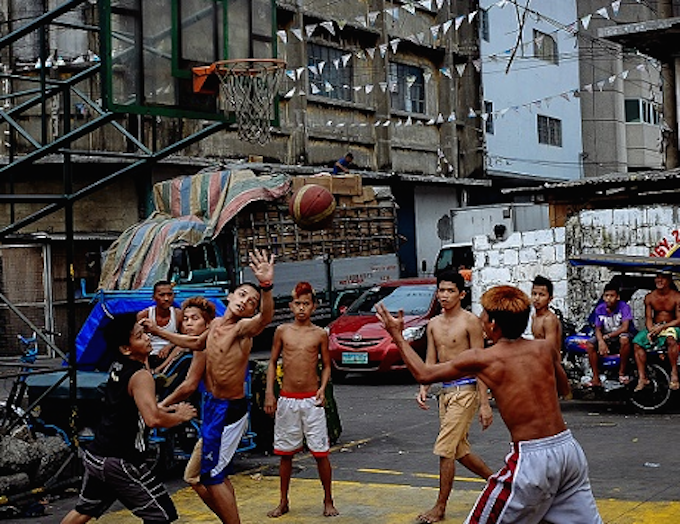
By Iris Gonzales in Manila
For decades, the Philippines had dodged the global AIDS crisis. Things have changed, however. There is now a full-blown AIDS crisis in the country, as seen in the growing statistics.
According to the latest data from the Philippine Department of Health’s Epidemiology Bureau, the number of individuals with HIV newly diagnosed per day rose to 22 last year, from just one in 2008, four in 2010, nine in 2012 and 17 in 2014.
In just one month in 2015 (July), there were 682 new cases registered, 17 percent more than the same month the previous year. Ninety-four percent of them were male and the average age was 27.
Half of the individuals diagnosed as HIV positive belong to the 25-to-34 year age group, while 30 percent were youth aged 15 to 24.
In terms of modes of transmission, the most common was sexual contact (663 cases), and eight percent of the sexually transmitted cases were among males who have sex with males. The other modes of transmission were needle sharing among drug users (17 cases) and mother-to-child transmission (two cases).
Tracing its beginnings in the Philippines, HIV infection in the country was first reported in 1984. Between January 1984 and July 2015, a total of 27,138 cases were reported, with the most dramatic increase in the number of cases happening in the past five years, according to the same government data.
Eighty-four percent (or 22,714) of the 27,138 diagnosed cases have been reported since January 2010.
In the early years of the epidemic, from 1984 to 1990, 62 percent (133 of 216 cases) were female. However, from 1991, more males were reported to be infected with HIV.
Between 2010 and 2015, males comprised 95 percent (21,601) of the reported 22,714 cases.
Younger generation
As the years have progressed, individuals diagnosed HIV positive have increasingly come from the younger generation.
‘The age group with the biggest proportion of cases has become younger: from 2000 to 2004, it was 30 to 39 years; from 2005 to 2009, it was 25 to 34 years; and from 2010 to 2015, it was 20 to 29 years.
Notably, the proportion of People Living with HIV in the 15-to-24 age group increased from 20 per cent in 2005-09 to 28 per cent in 2010-15,’ the latest Health Department report said.
Dr Joven Cuanang, neurologist and chair of a private hospital in the Philippines, said that because of the growing incidence of HIV in the Philippines, the medical community feels the urgent need to raise the public’s awareness of the issue, adding that “It’s already an epidemic”.
Cuanang explained that in his hospital, St Luke’s Quezon City, the top three neurologic complications of HIV are infections of the central nervous system, malignancies and lymphomas. Other HIV-related complications on the rise include dementia, viral infections and neuropathies.
According to Cuanang, healthcare workers are becoming more and more aware of the problem and he stresses that most cases of HIV/AIDs are preventable by good health education.
Against this backdrop of a growing health crisis, the Philippine Congress recently eliminated contraceptive funding in the 2016 national budget. This cuts vital support for lower-income Filipinos who rely on state-provided contraceptive services for protection from sexually transmitted diseases and for safe birth-spacing and family planning.
Poorer segments
According to a report published in 2013, up to 50 percent of pregnancies in the Philippines are unintended, largely due to lack of availability of modern contraceptive services, especially among the poorer segments of society.
“The budget cut threatens to roll back hard-fought gains in maternal health and reductions in infant mortality over the past decade made possible by government-subsidised or free contraceptive services,” Human Rights Watch (HRW) said in a commentary, adding that it also risks exacerbating the country’s HIV crisis.
The United Nations Population Fund has also criticized the congressional action as a threat to “the basic human right to health as well as the right to reproductive choices”.
According to the UN, the Philippines is “one of only a handful of countries at risk of a full-blown AIDS epidemic”.
As things stand, the Philippines is indeed facing an AIDS crisis. Authorities must do more by raising awareness, improving public education on the issue and, at the risk of earning the ire of the Catholic Church, keep on distributing free condoms, especially to the poor.
Iris Cecilia Gonzales is a Filipino journalist and blogger. She is among the winners in the TH!NK 3 global blogging competition organised by the Netherlands-based European Journalism Centre.
—











































